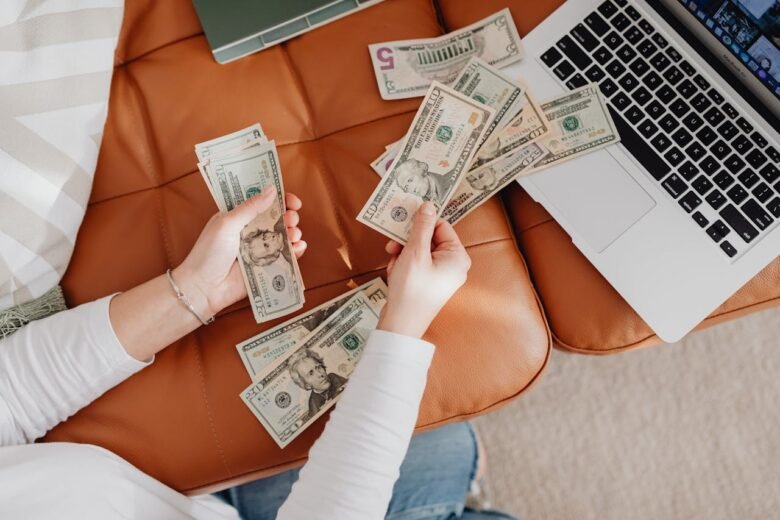You’re not alone. You are not alone. Many of us are constantly navigating the fascinating maze of spending psychology. Why do our wallets feel lighter than they should? Are we influenced by alluring marketing tactics, emotional triggers, or our social circle? In an era where everything seems to be a shiny object, understanding these factors will help us make more informed decisions. Join me to explore the complex web of spending behaviors and learn how to gain control.
The Role of Marketing and Advertising
Advertising and marketing play an important role in influencing our purchasing habits. They help us create a picture of what we want and often inspire desire for products that we didn’t know we needed. Brands connect with consumers through catchy slogans and vibrant images. This emotional connection can drive impulsive purchases, driven by lifestyle promises.
Exclusive deals and limited-time offers create urgency. Fear of missing out on a deal or offer makes us act more quickly than we would otherwise. Repeated exposure to advertising conditions our brains. The more we use a product the more likely it is that we will buy it. Marketing isn’t about selling a product. It’s also about creating narratives that speak to our fears and aspirations. This interaction influences our decision to purchase items that are not essential.
The Emotional Triggers that Influence our Spending Habits
Emotions are a major factor in our buying decisions. We often buy ourselves something special when we are happy. An impulse purchase can be triggered by a simple reward. Stress and anxiety can also lead to spending. Many of us turn to retail therapy in tough times. It can give a temporary boost, but it may lead to regrets later.
Nostalgia can also be a powerful emotion that influences our purchasing decisions. The products that are tied to our most treasured memories can trigger strong emotions, prompting us to spend money just to relive those moments. FOMO (fear of missing out) can also drive people to make impulsive purchase. Limited-time deals create an urgency that makes us want to buy things we don’t really need. Understanding emotional triggers can help us understand why we sometimes open our wallets wider than necessary. This pattern can be recognized to help you make more conscious spending decisions.
The Impact of Social Media on Consumer Behavior
Social media has changed the way that we shop. Platforms such as Instagram and TikTok present products in an attractive format that entices consumers with lifestyles curated by influencers. Influencers are key in this process. Influencers can influence our decisions, allowing us to feel more connected with trends and brands. Social proof has an undeniable power; when friends or celebrities endorse something, they feel more trusted.
Fear of missing out (FOMO) is another factor that drives impulse purchases. Users feel a strong urge to follow others who are wearing the newest gadgets and fashion items. A flood of targeted ads are also displayed based on our previous interactions and interests. This targeted approach increases our exposure to products that we never knew we wanted. Likes and shares are now forms of validation. Buying online is becoming more closely linked to identity expression. Social media influences not only what we purchase but also how we see ourselves as consumers.
How Our Past Experiences Affect our Spending Decisions
How we spend our money is influenced by the past. Financial decisions can be influenced by memories that last long after they have passed. Someone raised in a frugal family may feel guilty if they spend money on non-essentials. This guilt may lead to excessive saving or avoidance behaviors, even if they are not needed.
Spending is a great way to show love and success for those who have grown up in abundance. Some people may accumulate items that they don’t really need in order to feel validated. Traumatic money experiences, such as hardship or loss, can also cause anxiety. This is why impulsive purchases are often made to cope with these feelings, rather than for rational planning. Understanding these influences can help us understand why we reach for the wallet at times when logic and necessity are not in line.
How to Control Overspending
Create a detailed budget to regain control of your spending. This tool allows you to track every dollar. The 24-hour rule is the next step. Wait a day before making an impulse purchase. The desire will often fade away. Cash is a better option than cards. It feels different to physically hand over cash than to swipe plastic. You are more aware of what you spend.
Separating wants from needs is another powerful strategy. Make two lists, one for essentials and the other for non-essentials. Prioritize your purchases according to necessity. Limit your exposure to triggers such as sales or advertisements that encourage overspending. To reduce temptation, unsubscribe from emails that promote products and limit your time spent on shopping sites. Implementing these strategies will help you reshape the way you view money over time and create healthier spending habits.
Conclusion
Understanding the psychology of our spending habits can help us develop healthier financial practices. Understanding why we buy is more important than budgeting. It’s important to be aware. Spending journals are a great way to keep track of your purchases and to reflect on the emotions associated with them. This simple habit encourages mindfulness and helps you make intentional choices when shopping.
Engage in money management resources. Workshops, apps or even community groups provide insight and support that resonate with individual experiences. Change takes time. Over time, small adjustments to your spending habits can lead to significant savings. Accept each step rather than perfection. Be patient with yourself as you begin this journey of self-awareness and adjustment. The shift in your mindset doesn’t happen overnight, but it is the first step to lasting changes aligned with your goals and values.
FAQs
1. What are the common emotional triggers for impulsive purchasing?
Impulsive purchasing is often triggered by emotional states like stress, sadness, or happiness. When you are feeling anxious or down, retail therapy can be appealing.
2. What impact does advertising have on my buying decisions?
Advertising can create desire by presenting the products in an attractive way and associating with positive emotions or lifestyles. This can influence consumers to make unplanned purchases.
3. How can social media affect my spending habits?
Absolutely! The social media platforms often showcase lifestyle trends that lead users to believe that they need specific products in order to be accepted or validated by their peers.
4. What childhood experiences have influenced my spending habits as an adult?
Children’s lessons in money management, whether they are learned from parents or through personal experience, can have a profound impact on how people handle their finances and perceive value later in life.
5. What are some practical steps I can take if my spending is out of control?
Create a budget that focuses on the essentials and not wants. Unsubscribe from promotional emails. Implement a period of waiting before you make non-essential purchases. Ask friends to help.




